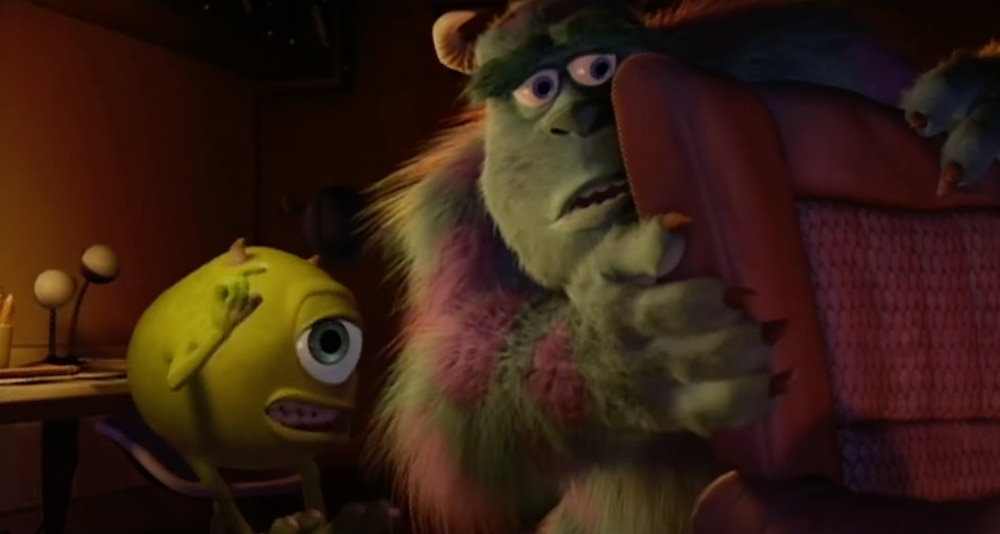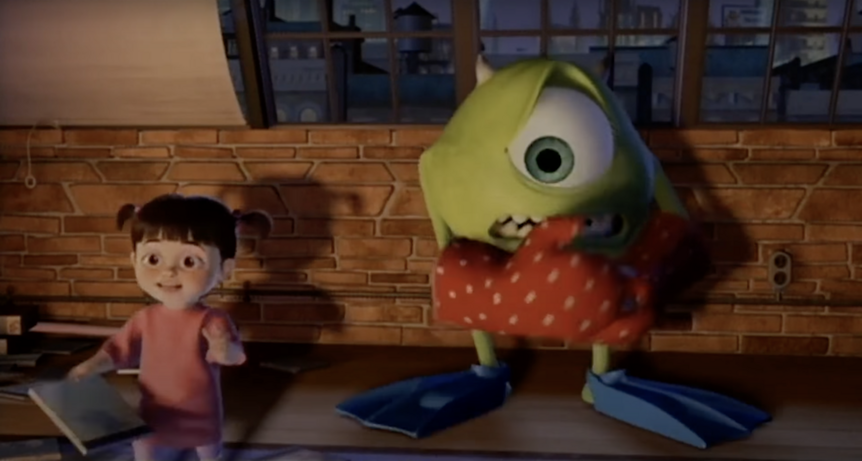Create a free profile to get unlimited access to exclusive videos, sweepstakes, and more!
20 years later, Monsters, Inc. is still a masterclass in world building
Monsters, Inc. starts with a simple concept: Where does the monster in your closet come from, and why is it there?

If there's one thing at which Pixar has proven unbeatable for decades — beyond making even the most cold-hearted among us cry in a dark theater full of strangers and winning Oscars — it's world-building. Ever since audiences were introduced to Woody, Buzz, and the gang in 1995, Pixar flicks have whisked viewers to worlds where bugs incite revolutions, rats make excellent chefs, and emotions are enacted by sentient beings living in our brains.
Even with this impressive, ever-growing portfolio of worlds at its disposal, none will ever beat the sheer ingenuity of Monsters, Inc., which premiered in theaters 20 years ago today on Nov. 2, 2001. It started with a simple concept: Where does the monster in your closet come from, and why is it there? Monsters, Inc. and its (rightfully) beloved 2013 follow-up Monsters University posit that monsters use children's frightened screams to power their own world. Because, you see, beyond human reach exists a thriving metropolis — or, rather, "Monstropolis" — where monsters of every size, shape, and color live, work, and eat sushi.
The crème de la crème of gigs, the Monstropolis version of an astronaut who boldly ventures into worlds unknown, is to be a Monsters, Incorporated-employed "scarer," the quarterback-esque monsters who creep through literal doors from their world to the human one and scare kids for the power of their screams.
Our childhood fears were simply fueling monster capitalism.
The irony, of course, is that monsters are perhaps even more afraid of the kids they're scaring than the kids are of them. This is introduced early on when one child's door is shredded because the kid became too difficult to scare, and comes to a head when a pig-tailed, nightgown-clad little girl only known as "Boo" wanders into the monster world and imprints on a monster Odd Couple: a scarer, James P. "Sully" Sullivan (John Goodman), and his best friend and partner, Mike Wazowski (Billy Crystal). Over the course of the film, the pair scramble to get Boo home and, in doing so, unearth an evil corporate scheme and discover laughter is 10 times more powerful than screams. Therein lies the Pixar message: Joy will always triumph over fear.
In absorbing this world throughout Monsters, Inc.'s 1 hour, 36-minute runtime, you can either enjoy the creativity at a surface level or go down a mind-bending "what if?" rabbit hole.
On that surface level, what makes Monsters, Inc. so ingenious is its insistence that there is a secret world just beyond our reach, one so similar to our own and yet vastly different; the monsters we meet have no rhyme or reason to their shape or size, and their world is built to accommodate those differences. As the film's production designer Harley Jessup explained in a 2005-'06 exhibit for the Museum of Modern Art, "The visual possibilities were really wide open. There was a whole idea that Monstropolis is a company town, almost like Pittsburgh, that grew up around one industry."
Monstropolis is, of course, built around the scaring industry. References to a power shortage color residents' everyday lives and ultimately lead to the scheme Sully and Mike put an end to: kidnapping children and forcibly sucking the screams from their lungs. Their problems are solved after our heroes acknowledge how much more literally powerful Boo's giggles are to her cries.
And this is where the door to the rabbit hole opens. Appropriately, we'll start with the doors that lead to the human world. The mechanics of said doors are equal parts science and magic. Don't think too hard about your closet door's potential for interdimensional travel — instead, just accept that bureaucratic monsters have it figured out. Or are these monsters aliens? Do these monster aliens use doors rather than traditional teleporters? Does Monstropolis exist on a planet at the center of a galactic confederacy made up of countless other planets? That would certainly explain why there are so many different kinds of monsters: They all come from different planets, they've just made their home on Monstropolis' egalitarian world.
Beyond the Pixar conspiracy camp — which we don't need to take to Cars-level conspiracies, no matter how fun it is — is Monsters, Inc.'s talent for showing rather than telling. There's no room for exposition, and you're dumped right onto the Scare Floor alongside Mike, Sully, and their fellow monsters. It's through similarities to our own world — the office romance between Mike and Celia (Jennifer Tilly); the grumbling secretary harassing people about paperwork; the concerningly pristine, fluorescent-lit hallways — that the film builds a baseline familiarity that makes the oddities feel reasonable. So, you don't end up thinking too hard about a sushi restaurant implying the existence of monster Japan, or even the concept of our world's Loch Ness Monster, Bigfoot, and Yeti being monsters who were banished from their own world to ours and are now stuck.
It's after Mike and Sully escape their own banishment to the Yeti's (voiced by Pixar mainstay John Ratzenberger) cave that the plot comes to a head. In an action-packed, door-hopping sequence, Mike and Sully race to return Boo home and throw relentless squinter and bully Randall (Steve Buscemi) off their tracks. Of course, they succeed, and put an end to Randall and Monsters, Inc. president Mr. Waternoose's (James Coburn) scheme, but it's this final chase scene that showcases how well the film has succeeded in showing rather than telling.
Mike, Sully, and Boo's Scooby-Doo gang-inspired chase sequence through the seemingly endless warehouse-slash-library of doors ties together everything we've learned about the monster world so far. These doors can and do take them to the closets of children anywhere in the world; Boo's laughter can activate thousands of the doors at once; and destroying a door effectively locks it forever, which is how they rid themselves of Randall. It's simple, yet effective in that there are enough moving parts (literally, in the case of the roller coaster-esque door system) that if this world's elements hadn't already been introduced — and subtly, rather than the movie shoving them down viewers' throats with extended exposition — children and adults alike would potentially be confused, or at least left unsatisfied.
Instead, our knowledge about the destruction of a door both assures us of Randall's banishment and creates an emotional finale when we learn Mike has spent a year putting Boo's door back together for Sully after it was destroyed. The pair exchange few words, with Mike simply mentioning that the door needs all its pieces to work, prompting Sully to put the final piece he's been carrying with him this whole time in place. The light flickers on, and Sully and the audience are delighted to find Boo on the other side.
There's no shortage of Pixar happy endings: a family of superheroes learns to work together, a father finds his son, and humanity returns to Earth with the help of a lovesick little robot. Something about Monsters, Inc.'s ending, though, feels especially poignant. The simplicity of that final scene — Sully cheesing as Boo gleefully yells out her name for him, "Kitty" — is an appropriately understated finale. It's one meant for a movie so richly detailed that when the credits roll, we're tempted to go check our closets for a universe where monsters have learned to bottle happiness.



























